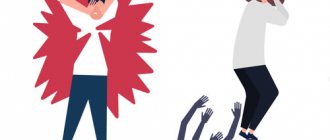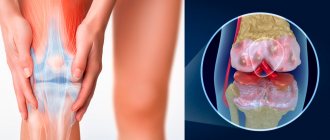Panic attacks
Previously, the state of panic attacks was classified as a symptom of vegetative dystonia syndrome. Panic attacks have been considered an independent disease since 1980. They are now included in the International Classification of Diseases. Today, experts are reconsidering the approach to panic attacks: increasingly, doctors attribute the symptoms of the disease to neuroses, and all emerging disorders are considered neurotic disorders of autonomic dysfunction.
Paroxysms of a panic nature affect almost 5% of the population. Residents of megacities are the most vulnerable to the manifestation of this disease. As a rule, the first attacks begin between the ages of 25 and 45 years. A milder form of panic attacks is observed in old age, when the symptoms are mild, and during an attack of panic attacks the emotional part noticeably predominates. Panic attacks can be a consequence of a paroxysm experienced in youth.
Panic attacks can be a single attack or a series. In case of relapse, the disease should be classified as panic disorder. If previously the disease was dealt with exclusively by neurologists, now psychiatrists and psychologists also deal with the patient for these disorders. The symptoms are also of interest to doctors in the fields of pulmonology, endocrinology, gastroenterology and cardiology.
Help with panic attacks
In order to combat panic attacks, you need to consistently perform the following manipulations:
1) Stop the attack . For this purpose, pharmacological drugs (sedatives, beta-blockers, tranquilizers) are used. 2) secondary syndromes (agoraphobia, depression, etc.) with the help of a doctor Prevent relapse . To do this, they resort to psychotherapy and medication.
We should try in every possible way to prevent the occurrence of repeated attacks. Experts offer an effective method - cognitive behavioral psychotherapy, which involves exercises to teach the patient how to relax. The psychotherapist explains in detail how an attack functions (its mechanism), teaches how to fight fears and correctly interpret one’s own feelings.
It is important not to confuse panic attacks with anxiety disorders, which exhibit the same symptoms. But panic attacks are paroxysmal in nature, and the disorder is constantly accompanied by a feeling of fear.
Prescribing medications and calculating dosage should be carried out by a doctor, taking into account individual characteristics. Treatment begins with taking minimal doses under the supervision of a doctor, who monitors the dynamics of the disease. First aid for a panic attack is effective in combating the disease, so you should not delay your visit to the clinic.
Causes of panic attacks
Panic attacks are traditionally provoked by physiological, biological and psychogenic factors. Often there is a combination of factors, one of which causes the initial attack, and others – its relapses.
Physiogenic triggers appear as a result of physical overload, high insolation, acclimatization, meteorological fluctuations, drug use, etc. Some medications can also, to one degree or another, affect the occurrence of panic attacks: cholecystokinin (used in diagnosing the gastrointestinal tract), bemegride (added for induction of anesthesia), some types of steroids.
Patients prone to panic attacks mostly have similar character traits and personality traits. For men, this is an unusually reverent concern for their own health. Women have a desire to be in the center of attention, attracting interest to themselves, drama and excessive demonstrativeness. People who prioritize caring for others over being selfish about themselves have never experienced panic attacks.
Panic attacks: signs, symptoms, causes
24 June 2021 04:06
Quantity
Panic attacks are uncontrollable and causeless panic attacks, one of the very common ailments of modern man. However, many people suffering from such disorders are unaware that panic attacks are highly controllable and treatable. The classic definition says that a panic attack is a spontaneous attack accompanied by anxiety. Most often, panic attacks appear after frequent stressful conditions. We must understand that a state of panic is common to people, if there are reasons, but a panic attack is characterized by suddenness. A person experiences fear, incomprehensible anxiety, panic, horror for no reason. Biologically, a large amount of adrenaline enters the blood, and the attack lasts from one minute to forty. Causes of panic attacks Paradoxically, not all people prone to panic attacks know what exactly is happening to them. Very often, a panic attack is confused with heart disease. Their symptoms are actually somewhat similar. A panic attack, or, as it is also called, a vegetative crisis, can begin with pain in the chest, a feeling of lack of air and a rapid heartbeat. Patients often try to relieve these symptoms with Corvalol or other similar drugs, but in the case of a panic attack this usually does not have any effect. The causes of panic attacks can be physiological, biological and psychogenic factors. Often this may not be one factor, but several at once. In this case, one factor causes the initial attack, and others cause its relapses. Physiogenic triggers appear as a result of physical overload, acclimatization, meteorological fluctuations, and drug use. Some medications can also affect the occurrence of panic attacks to one degree or another. Sometimes panic attacks begin after noticeable changes in life (and these can be good changes) or after a stressful situation. Part of the cause of panic attacks may also lie in physical illnesses - for example, certain heart pathologies, hyperthyroidism, hypoglycemia and others. A panic attack can be triggered by taking certain medications or stimulants, ranging from caffeine to strong central nervous system stimulants. And finally, panic disorder may be one of the manifestations of depression. Symptoms of a panic attack • a feeling of unreasonable fear and panic; • chest pain; • labored breathing; • cardiopalmus; • increased heart rate; • pressure change; • dizziness; • insomnia; • numbness of the limbs; • foggy consciousness. A panic attack can last from several minutes to several hours, but on average lasts about half an hour. Depending on the severity of the disease, attacks can be repeated 1-2 times a month or several times a day. Treatment A psychotherapist treats panic attacks. During consultations, the specialist teaches the patient to overcome causeless fear. The selection of drug treatment depends on the severity of the disease. But only a doctor can give all recommendations. In serious cases, when panic attacks are associated with depression, the patient will be prescribed antidepressants. The duration of treatment depends on the development of the disease. In general, it takes from 1-2 months to a year.
Track. news
Prev. news
Pathogenesis of panic attacks
The causes of panic attacks are explained by several theories. The work of researchers in this matter is significantly complicated by the uncertainty of patients regarding the causes of the attack, as well as the inability to connect the traumatic situation and paroxysm. Because of this, there is no complete certainty regarding the causes of the disease. An additional complicating factor is the rapid progression of panic attacks and their sudden onset.
The most modern approach to the causes of panic attacks is the influx of anxious thoughts on the patient, which is not justified by absolutely anything. Under the influence of these thoughts, adrenaline and other catecholamines begin to be actively produced. As a result, blood pressure increases significantly and blood vessels narrow. Arterial hypertension during panic attacks affects even those people who have an absolutely normal premorbid background. Sodium lactate accumulates in the tissues, the concentration of CO2 gas in the blood decreases, breathing quickens, and tachycardia may appear. As a result of these disorders, a feeling of lightheadedness, derealization, and dizziness occurs.
During panic attacks, the brain activates cerebral chemoreceptors, which are highly sensitive to changes in the composition of gases in the blood. In parallel, noradrenergic neurons become hyperactivated. As a result, feelings of anxiety and fear increase, and the panic attack only intensifies.
Panic attacks - how to fight, how to cope?
Sarclinic patients often ask questions: “ How to deal with a panic attack , help?”, “How to overcome, how to cope with a panic attack at night, during sleep, during the day, in the morning, in the evening, at night, in the evenings, in the morning, during the day, during falling asleep, when waking up? “ How to get rid of panic attacks , how to relieve an attack?” “Panic attacks - what to do, can they be cured, are they dangerous, where to treat, how to overcome?”
Sarklinik conducts a rehabilitation program for people with panic attacks after treatment. Sarklinik knows how to treat and cure a panic attack . On the website sarclinic.ru you can ask a doctor a question online, read reviews. At the first consultation, the doctor will tell you how to live, what to take, how to treat, how attacks manifest themselves, how prevention works in the future, and how breathing exercises are useful. If there is a comprehensive fight against panic attacks, then a happy life without panic attacks .
Sign up for a consultation. They have contraindications. Specialist consultation is required. Photo: (©) Spaxia | Dreamstime.com \ Dreamstock.ru The people depicted in the photo are models, do not suffer from the diseases described and/or all similarities are excluded.
Related posts:
Brain stroke: ischemic, hemorrhagic, treatment, rehabilitation, consequences
Phobia, fear, how to get rid of fear, how to overcome, treat and overcome fear, treatment in Saratov
Neuroses, neurosis, treatment of neurosis, neurasthenia, how to treat
Hypothalamic syndrome, treatment of hypothalamic syndrome, how to treat
Poor attention: absent-mindedness, exhaustion, narrowing of scope, stiffness, distractibility
Comments ()
Symptoms of a panic attack
Panic attacks are often a consequence of a mental disorder (schizophrenia, hysterical neurosis, depression, etc.) or somatic diseases (peptic ulcer, neurocirculatory dystonia, coronary artery disease, etc.). Psychological factors determine polysymptoms, as well as the presence of subjective and objective symptoms.
Often panic attacks have no connection with real danger. In this case, the disease takes a sudden start, the symptoms rapidly intensify, and then decline, leaving the patient alone with the state of recovery after the attack. Typically, panic attacks last about 15 minutes. In rare cases, short attacks (about 10 minutes) and long attacks (about 1 hour) have been observed. The most powerful attack is considered to be 5-10 minutes into its manifestation. Patients, recalling this period, complain of the particular severity of the attack, as well as a certain emptiness and depression.
The most common complaints are a feeling of suffocation, pain in the heart, cardiac arrest or excessive activity, breathing problems, lack of air, etc. Symptoms such as paresthesia, dizziness, chills, and sweating are often encountered. At the end of the attack there is polyuria. Patients often talk about cognitive impairment: depersonalization, unclear sound, blurry objects, lightheadedness, and so on. More rare symptoms are vomiting, belching, nausea and other gastrointestinal symptoms.
The first panic attack, with rare exceptions, is expressed by a specific fear of death. When repeated, it takes on a clear form: a person is overcome by the fear of death from some disease or accident. A feeling of anxiety appears, which is difficult to explain in any way, internal tension. Often patients reach a state of passion. Some patients are most susceptible to emotional disorders: feelings of pity, insignificance, hopelessness.
During panic attacks, certain functional disturbances may occur: twisting of the arms, chills, mutism, blurred vision, numbness of the limbs, changes in gait, etc.
Panic attacks: what to do?
A panic attack (PA) is an episode of intense fear or discomfort that occurs suddenly, for no apparent reason, and has the following symptoms (minimum 4):
- increased heart rate,
- increased blood pressure,
- sweating,
- dry mouth,
- chills,
- feeling of suffocation
- labored breathing,
- discomfort in the chest area,
- feeling of a lump in the throat,
- nausea,
- burning in the stomach area,
- feeling dizzy
- numbness or tingling sensation,
- derealization or depersonalization,
- fear of death,
- fear of losing control of oneself.
The symptoms that occur should not be caused by other diseases.
The first PAs are more common at a young age, but are also detected after 60 years. PA can occur during any activity and even at rest. They often occur for no apparent reason, but they can occur against the background of stressful and traumatic events, emotional stress, life difficulties, situations of isolation from family, and experiences associated with loneliness. The impact of the above situations may cease, but PAs will continue to occur.
PA is based on a complex of biopsychosocial factors, the combination of which leads to the occurrence of the first PA.
After some time and after several episodes of panic attacks, a person may develop anxiety in anticipation of the next attack and develop avoidance behavior in relation to public places, being in crowds, large open spaces, and traveling alone. This is due to the fact that the thought often arises: “They won’t be able to help me during an attack and I might die/lose control.”
People who have suffered from PA often describe it as: “the ground disappears from under your feet,” “your heart is about to jump out of your chest,” “there is not enough air,” etc.
It should be noted that not a single panic attack led to the death of a person. However, knowing this does not always help to cope with PA.
If you are experiencing similar conditions, it is definitely worth seeing a doctor for an examination. Once other medical conditions have been ruled out and panic disorder has been established, psychotherapy and/or medication support may be recommended.
There are self-help methods for panic attacks. They are most effective at the very beginning of the development of an episode of PA.
Physiological:
- An increase in the concentration of carbon dioxide and a decrease in the level of oxygen in the blood reflexively inhibits the mechanisms of PA.
To do this, you can use breathing into a paper bag. The bag should be positioned so that it covers the mouth and nose area. Inhale slowly and continuously through your nose and exhale through your mouth. If you don't have a paper bag nearby, try using cupped hands.
- Reducing the frequency and strength of heart contractions through stimulation of the parasympathetic system with abdominal breathing.
Diaphragmatic (abdominal) breathing is performed in a comfortable standing/sitting/lying position and is a slow continuous inhalation through the nose for 3 counts. Imagine that you are inflating a balloon with your stomach. Then perform the same slow and continuous exhalation through your mouth for 5-6 counts.
Psychological:
- Back to reality:
- Grounding. If you are standing, then feel how your feet are in contact with the surface; if it is difficult to feel this, tap your feet on the surface. If you are sitting, sway from side to side and feel support in the area of the ischial tuberosities. Shift your focus to your body and your support points.
- Wearing a rubber band around your wrist may be helpful. If an episode of PA occurs, pull back and release the elastic, focus on the sensations at the point of contact between the surface of your hand and the elastic. Repeat several times.
- Use a positive attitude in your voice, for example, “Everything is fine, there is no disaster,” “I’m fine, it’s just a fantasy,” “I’m calm, I’m not afraid.”
- Switch your focus to the external environment, describe what is happening in reality near you. For example, “a red car passed”, “a girl in a green scarf passed by”, “there are three people at the bus stop”, “it’s 6:45”, “the traffic light is green”, “an old shop”, “you can hear music from a cafe "and so on, at least 10 facts.
- Use positive visualization. Remember in the form of a photo a pleasant event or a place where you are usually safe. Close your eyes and immerse yourself in exploring the photograph in your memory. Feel your body relax and your physical symptoms go away.
- Explore your fear through metaphor. Answer yourself the questions: “what shape is my fear?”, “what color?”, “what does it look like?”, “what can it be called?” “What does he need from me?” - this will allow you not to distance yourself from yourself by plunging into a panic state, but, on the contrary, to get closer to your experiences through metaphor.
Remember the “STOP Tap” formula to urgently stop the onset of a panic attack:
S - “Stop!”
You need to tell yourself this clearly and clearly, without thinking “what does this mean?” and for what?".
T - Body.
Shift your focus to the body, use grounding and slow diaphragmatic breathing.
O - Review.
Shift your focus from your body to your environment by simply describing what is happening around you.
P - Positive attitude.
Focus returns back to your thoughts, repeat an attitude like “Everything is fine, there is no disaster”, “I’m fine, this will pass”, “I’m calm, I can handle it” and any others close to you.
Crane - To early action!
Switch your attention to the action that you performed before the attack or any routine, everyday thing that you would do outside of the attack.
Treatment for panic disorder is a long process. Self-help methods reduce fear of PA, soften its manifestation, and shorten the duration of the episode. Psychotherapy still has the main effect; do not neglect the help of specialists.
Prepared by: Sinkevichiute E.R., psychotherapist,
medical and psychological department.
Course of panic attacks
A panic attack can be abortive (less than 4 symptoms) or extensive (more than 4 symptoms). Abortive attacks can occur several times a day. In turn, a full-blown panic attack can manifest itself both quite often (several times a week) and rarely (once every few months). As a rule, patients are susceptible to both types of panic attacks. It is only in exceptional cases that a person is overcome only by extensive attacks.
Patients adapt to the consequences of a panic attack in different ways. For some, panic paroxysms are pronounced (inability to distinguish the inter-crisis period from a panic attack), others feel healthy. In the intervals between attacks, chills, hypothermia, emotional and psychopathological manifestations, headache, diarrhea, constipation, cardialgic symptoms, etc. may be observed.
After several panic attacks, patients experience an inferior lifestyle and a certain limitation associated with avoiding places and situations in which the crisis occurred.
Specifics of panic attacks
In modern medicine, the above symptoms are often interpreted as signs of vegetative-vascular dystonia. Sometimes you can come across such a term as sympatho-adrenal paroxysms. If we talk about world medicine, the term “panic disorder” is more often used.
In general, panic attacks can be diagnosed as a separate disease, as well as in combination with other disorders. This disease is included in the group of neurotic diseases, which are associated with somatic disorders and stress.
When we talk about several episodes of panic attacks, we have to talk about a complex pathology, which is manifested by changes in behavior and anxiety.
Diagnosis of a panic attack
A study of patients with panic paroxysm clearly demonstrates the presence of most symptoms of autonomic dysfunction. Autonomic disorders can also be detected in the period between attacks. At the same time, neurological studies do not provide any information; no serious neurological abnormalities are detected among patients.
After suffering a panic attack, patients should undergo pathopsychological examination, neuropsychological examination, personality structure study and other psychological examinations.
After panic attacks, various procedures may be prescribed, the list of which directly depends on the clinical manifestations of the disease. Most often, patients are subject to the following studies: ECG, X-ray of the lungs, ultrasound of the heart, 24-hour monitoring of blood pressure and ECG, MRI of the brain, ultrasound of the abdominal cavity, analysis of gastric juice, FGDS, and so on. Additional consultations with specialists in related fields of medicine may be required: pulmonology, cardiology, endocrinology, psychiatry, etc.
Diagnostic criteria
A feeling of discomfort and fear, the manifestation of more than 4 symptoms during repeated paroxysms are the basis for a diagnosis of “Panic attack”. At the first manifestation of the disease, a diagnosis is not made. Also, the diagnosis is questioned if 5-6 of the following symptoms are present: visual impairment, blurred hearing, gait disturbances, cramps in the limbs, numbness of the limbs and temporary paralysis, all-paresis, etc. A single panic attack resulting from a physical or psychological disorder is not interpreted as a disease. overvoltage, as well as getting into a situation where the patient is in real danger. Only with repeated attacks with pronounced autonomic disorders and psychopathological disorders can we talk about the full development of the disease.
Panic attack treatment
The main approach to treating a panic attack is the interaction of a psychologist and a neurologist, who jointly try to convince the patient on a subconscious level that a panic attack is not a disease, does not pose a risk to his life and health, and can also be controlled by the patient himself. Changing your perspective on various life situations is one of the most important aspects of recovery.
Antidepressants (tricyclic and tetracyclic) occupy a special place in drug treatment. However, their effectiveness does not appear for the first few weeks, and the symptoms of panic attacks during this period may become more pronounced. After about two months, the stage of maximum effectiveness of the drugs begins. Among the drugs, the most common are cipramil, fluvoxamine, fluoxetine, paroxetine, sertraline.
If desired, the patient can be prescribed various benzodiazepines. They do not increase the symptoms of a panic attack and are more effective from the moment of use, however, these drugs are not recommended for use for more than 4 weeks due to the risk of dependence on them. In addition, they are ineffective for depressive disorders. As a rule, these drugs are recommended for use to relieve paroxysms.
The choice of drug treatment method is entirely individual. As a rule, the course of drug use is 6 months or more. A complete cessation of the use of medications is relevant only in cases where the panic attack has not recurred within 40 days.
Breathing control is the simplest and most effective non-drug therapy. The patient needs to take as deep a breath as possible and hold his breath for as long as possible. After this, you need to exhale slowly. At the same time, you need to try to relax your body and close your eyes. This exercise is recommended to be repeated about 15-20 times. You are allowed to take a short pause of a few standard inhalations and exhalations.
Forecast
The patient’s personality traits directly affect the course of a panic attack, its severity and duration. Panic attacks become most severe for patients who perceived the first such incident as a real disaster. Sometimes the reaction of health care workers can also contribute to a faster progression of the disease. For example, when hospitalizing a patient in an ambulance, a thought is formed in his subconscious about serious health problems and the presence of serious illnesses.
Starting treatment as quickly as possible contributes to a positive prognosis for recovery. Each attack aggravates the situation, creates limitations in behavior, and is also clear evidence for the patient that the disease exists and is very dangerous. Recovery is possible when two factors coincide: adequate treatment by medical professionals and the efforts of the patient himself. In chronic panic attacks, these factors will contribute to a colossal increase in interpanic time.
Primary appointment with a neurologist: 1850 RUR.
Sign up Online 5% discount when registering from the site








